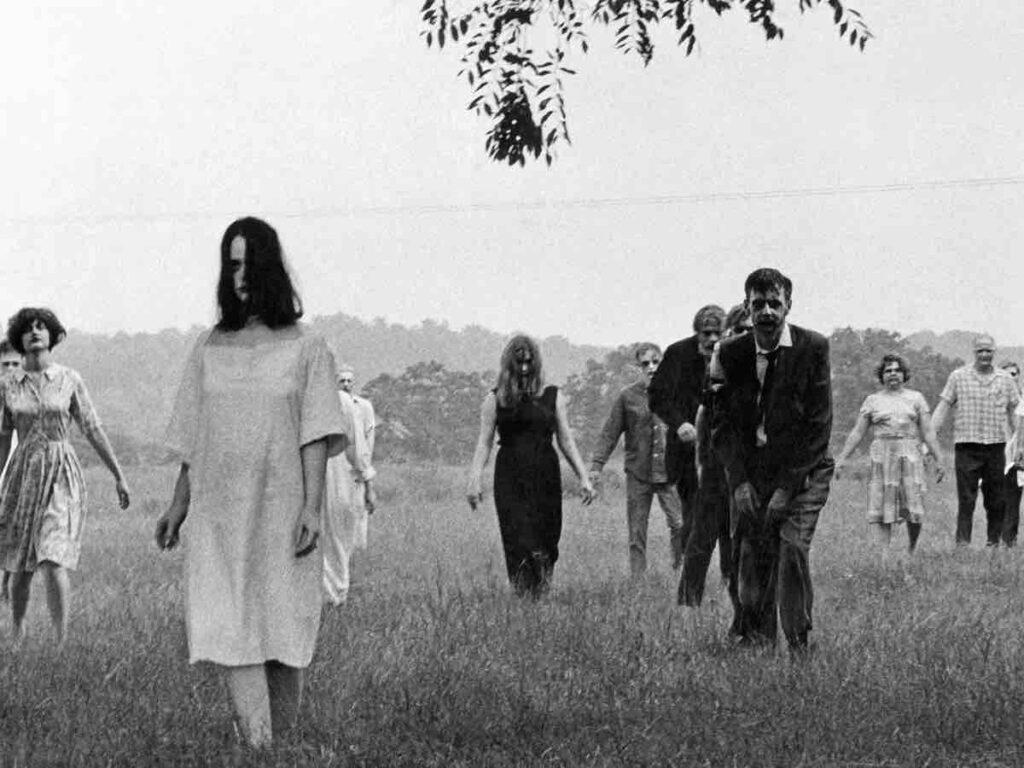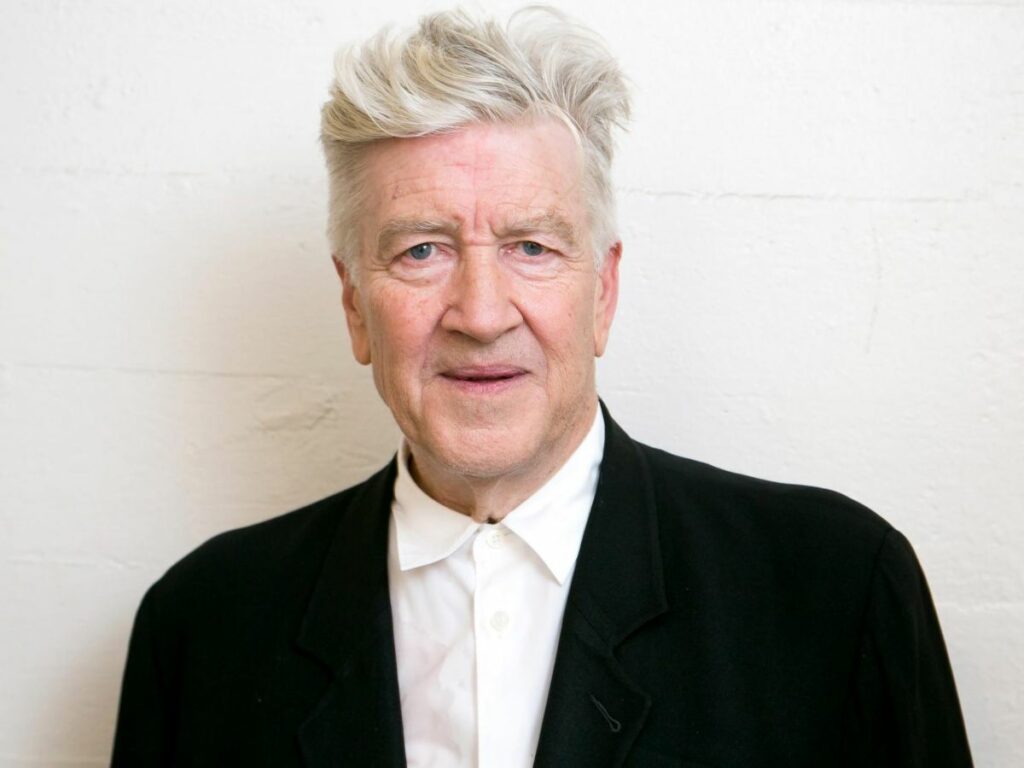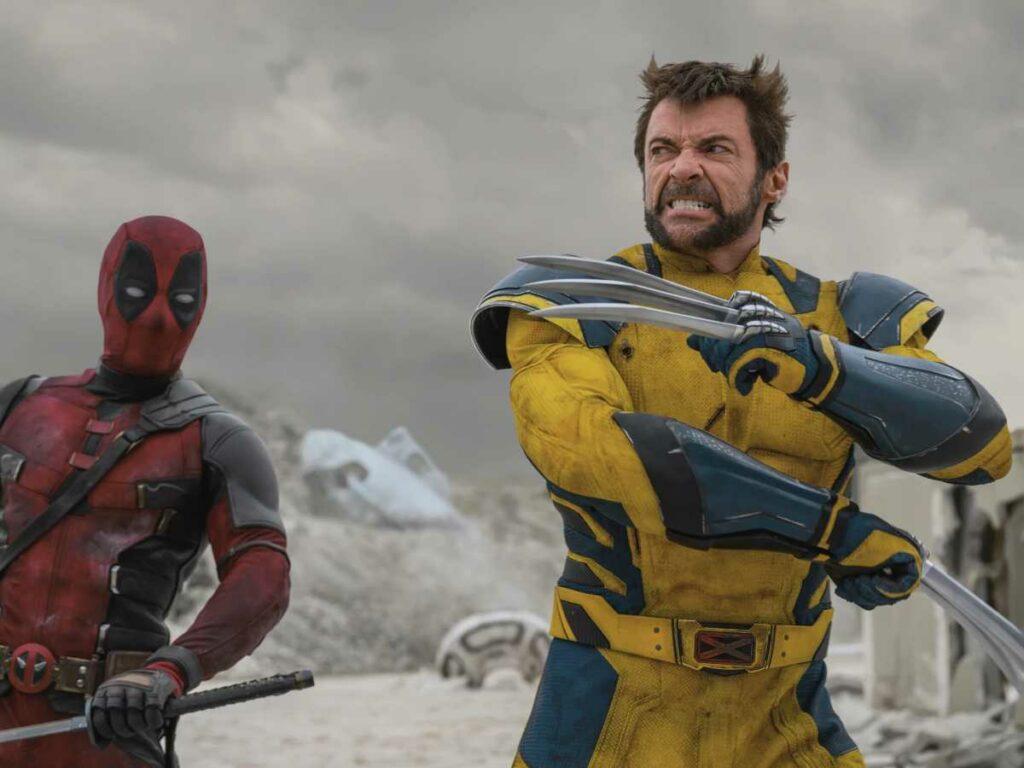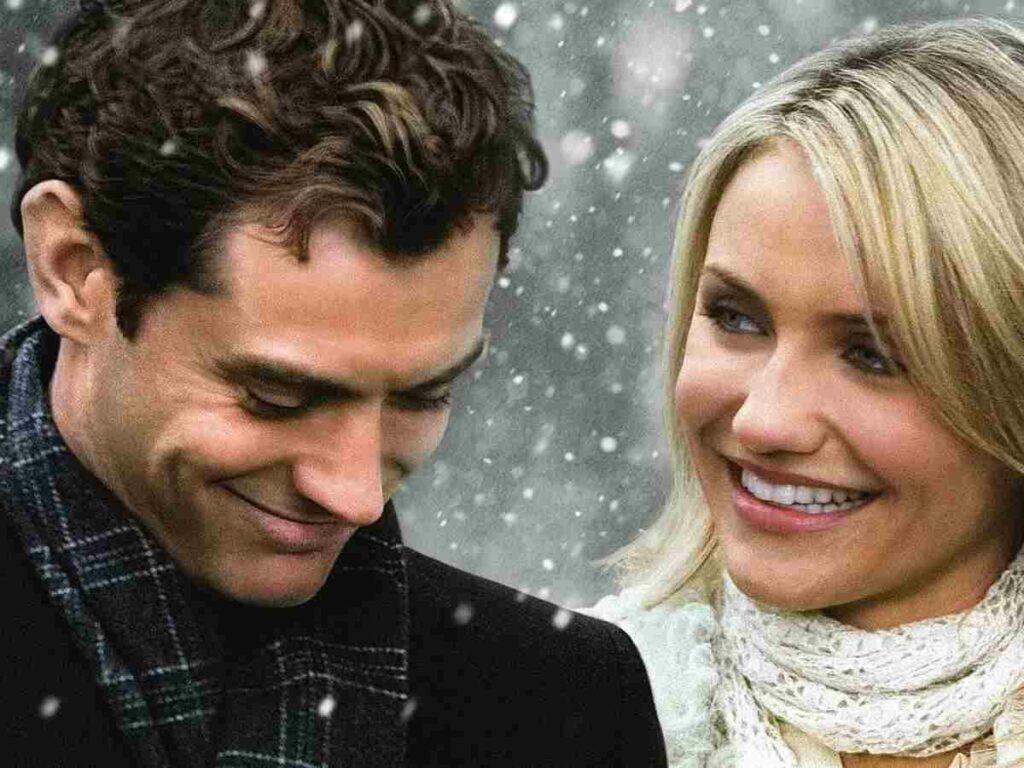Indie filmmaker George A. Romero was often credited with inventing the modern zombie horror subgenre. Interestingly, his 1968 movie Night of the Living Dead didn’t once use the z-word. But the history of zombies in cinema goes further back to 1932, with Victor Halperin’s White Zombie. Now, the zombie in this B-movie horror classic is entirely different from the modern human flesh-craving undead creature. White Zombie offers an entertaining exoticism of the popular cultural beliefs prevalent in Haiti and in their voodoo religion.
In fact, to understand the origin of zombies one must comprehend the synergy of myth and dark history that created it. There’s a theory that the word ‘zombie’ hails from West African languages which supposedly means ‘corpse’. In the 17th and 18th century, the European superpowers forcibly transported the Africans as slaves to the plantations in Caribbean islands including Haiti. The misery and suffering they endured under the hands of European slavers turned the displaced Africans into soulless mechanical creatures, in other words, a walking corpse.
When we think of zombies, we picture hordes of grotesque, flesh-chomping creatures in escapist apocalypse stories. But the word zombie probably came into existence to denote the predicament of the enslaved. After the successful slave rebellion and revolution in Haiti in the year 1804, zombie became part of Haiti folklore and voodoo religion. There was a belief that a witch-doctor or bokor revived the dead to be their personal slaves. In a way, such beliefs reflects the post-colonial anxiety regarding slavery.
This Haitian myth first found its way to America in Halperin’s White Zombie, and later in Jacques Tourneur’s I Walked with a Zombie (1943). Soon after American pop-culture appropriated the zombie myth, zombies fascinatingly became a powerful symbol for a lot of things. Romero used zombies to reflect the era’s societal ills like the Vietnam War, racism, nuclear holocaust, and rampant consumerism. In the 21st century, zombies dominate all forms of mass media across the globe, becoming a metaphor for our anxieties regarding economic inequality, authoritarianism, and the pandemic.
The enduring relevance and popularity of zombies doesn’t seem to be dying anytime soon. Let’s then quickly dive into some of the best zombie movies ever made:
30 Best Zombie Movies
30. Planet Terror (2007)

Planet Terror was part of the double feature, where filmmakers Robert Rodriquez and Quentin Tarantino paid homage to low-budget horror schlock. This sub-genre of exploitative, splatter horror that originated in the 1970s is known as ‘Grindhouse’ features. While Tarantino’s Death Proof was dull and annoying, Rodriguez’s intentionally cheesy zombie film parodies as well as honors the grimy, grindhouse cinema. Bruce Willis has fun playing Lieutenant Muldoon, who confronts a terrorist-cum-scientist named Abby regarding a toxic gas. Alas, a gunfight erupts, and the release of toxic gas turns people into flesh-craving zombies.
Planet Terror also contains quite a few subplots. But it doesn’t matter as Rodriguez sets up all the characters for excessive and sillier action sequences. Robert Rodriguez ticks off all the boxes of a grindhouse feature including campy dialogues, bad lighting, and chock-full of gore. A strip club dancer’s (Rose McGowan) machine gun leg amps up the novelty factor, adding a lot of fun to the proceedings.
29. Little Monsters (2019)
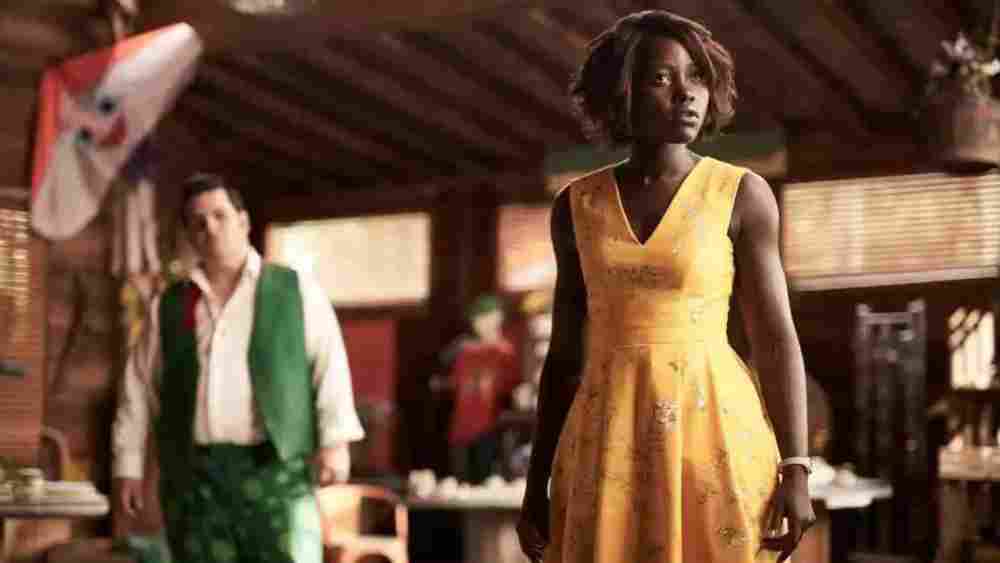
Abe Forsythe’s Australian zombie comedy Little Monsters revolves around a washed-up, unemployed musician Dave (Alexander England). He breaks up with his girlfriend Sara and stays with his sister and little nephew, Felix. Soon, man-child Dave falls for Felix’s beautiful teacher, Miss Audrey Caroline (Lupita Nyong’o). Dave follows Caroline on a field trip to a big playground called Pleasant Valley, situated right next to a US Army Testing Facility. And soon, they are caught in the middle of a zombie outbreak at the facility.
Little Monsters isn’t as hilarious or inventive as Shaun of the Dead and Zombieland. Unfortunately, it is the zombie invasion bit that lacks energy and excitement. There are a few good laughs in the early portions, including Felix dressing up in a Darth Vader suit. The best part of the film is clearly Lupita Nyong’o’s winsome performance. Be it her strumming away on her ukulele or bashing hordes of zombies with a shovel, Lupita has a fantastic screen presence.
28. Fido (2006)
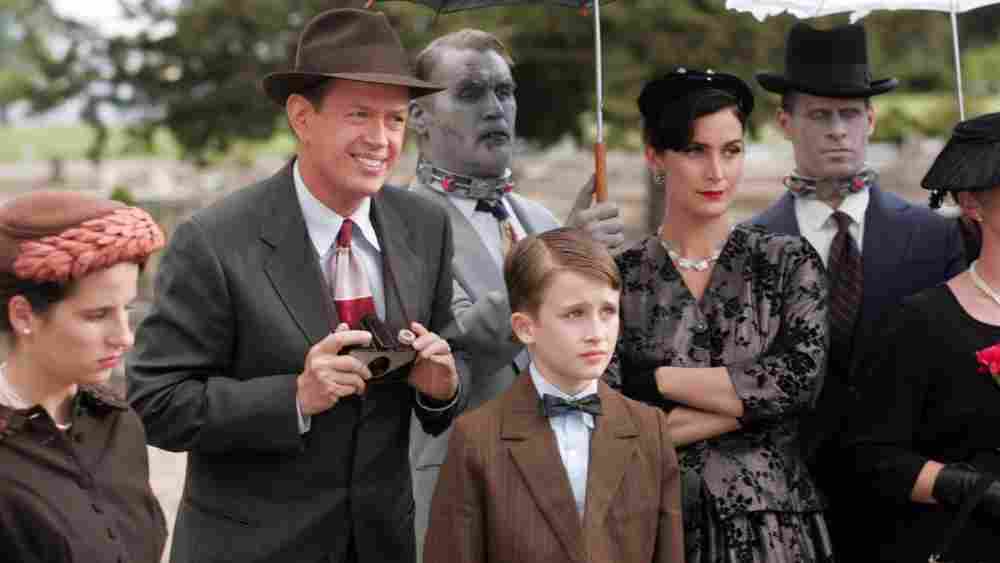
Andrew Currie’s Fido combines a peaceful 1950s suburban atmosphere with domesticated zombies. In this alternate history, a cloud of radioactive gas from space has caused the dead to come back to life with a ravenous appetite for human flesh. Thankfully, the humans have won in this fight for survival. A new corporation Zomcom has taken over the job of taming zombies and dispatching them to be robot-like servants for the suburban American populace. The film revolves around the Robinson family. The young and lonely Timmy Robinson (Kesun Loder) befriends a zombie and names him Fido.
Fido is an amusing satire of suburbia. The film has a few scary and dark moments. Largely though, Currie uses zombies as a metaphor for the paranoia and anxieties of the conservative 1950s. The cast, including Carrie-Anne Moss, Billy Connolly, Dylan Baker, and Tim Blake Nelson, is excellent. Fido may not satisfy horror fans, but it’s an interesting entry in the zom-com cannon.
27. The Plague of Zombies (1966)
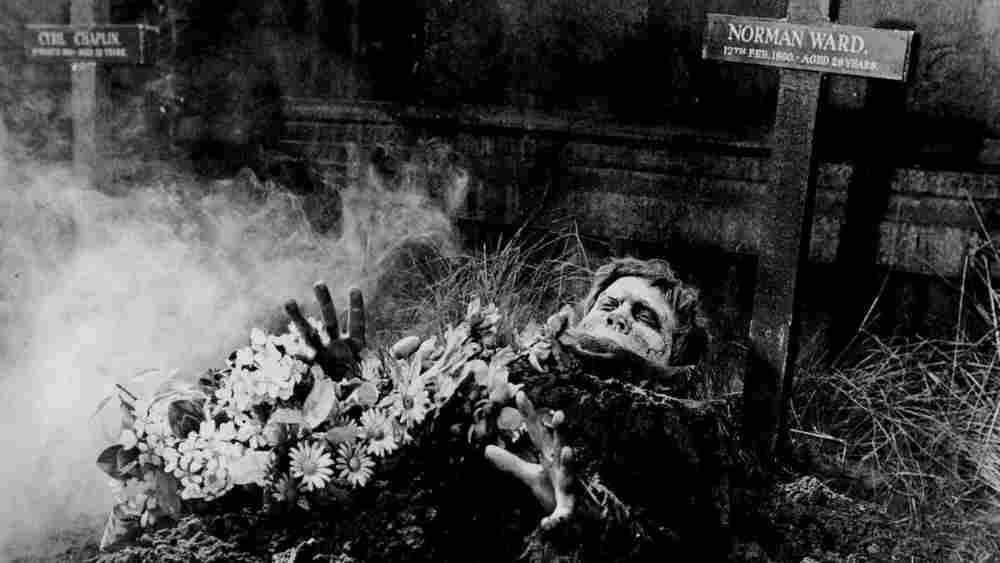
Hammer Film Productions of Britain is known for its B-grade gothic horror made in the 1950s and 60s, which redefined the horror genre. John Gilling’s The Plague of Zombies is among some fine yet lesser-seen works of hammer horror. In Zombie movies history, it is said to bridge the gap between early horror classics like White Zombie, I Walked with a Zombie, and Romero’s modern undead classic Night of the Living Dead.
The narrative is set in an 1860s Cornish village. Local doctor Peter Thompson is bewildered by a mysterious plague that’s killing the inhabitants. With the help of former professor John Forbes, Peter tries to do an autopsy on the dead. But the coffins are empty. The Plague of Zombies promises quite a few scary moments, particularly the night-time graveyard scene. The dialogues are very dull, but the atmosphere and action are well-crafted.
26. Dead Snow (2009)
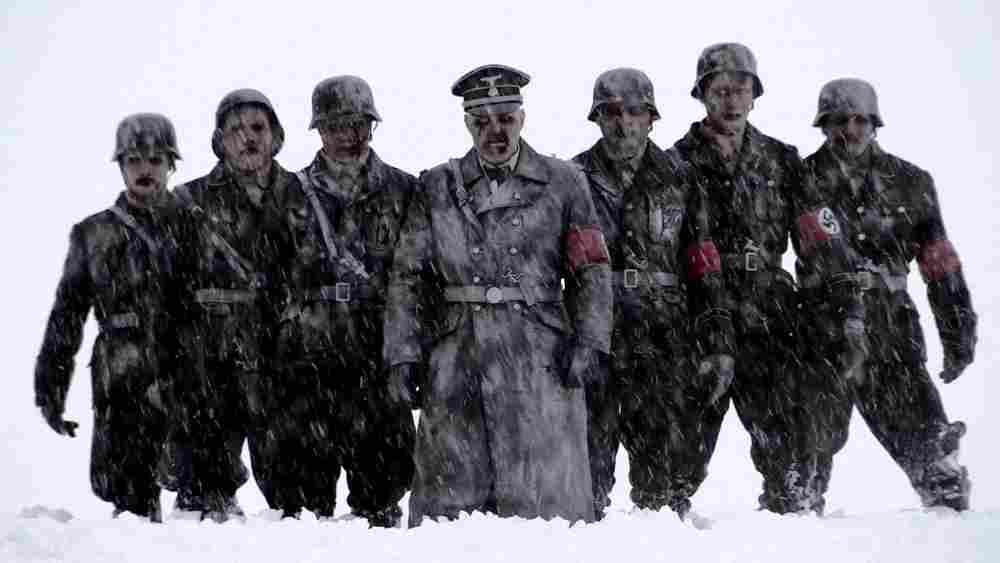
Tommy Wirkola’s snowy mountains-set Scandinavian horror flick pays homage to the 80s slasher horror. The chief pleasure of Dead Snow rather lies in its gimmicky and campy antagonists: Nazi zombies. A group of medical students makes a trip to a remote mountain cabin for their Easter vacation. The youngsters’ weekend of beer, conversations, and sex is interrupted by a brigade of undead Nazis. The students make the mistake of taking away the Nazis’ box of gold jewels and coins.
Apparently inspired by Sam Raimi and Peter Jackson, Wirkola sets out to make a brutal horror comedy with vacuous, one-dimensional characters. The violent scenes, however, have been done in a creative manner. The film impressively balances gore and absurd comedy. While conceptually, Dead Snow is unoriginal, it finely delivers the genre thrills. Wirkola made an equally entertaining splatfest sequel titled Dead Snow 2: Red vs. Dead (2014).
25. The Girl With All The Gifts (2016)
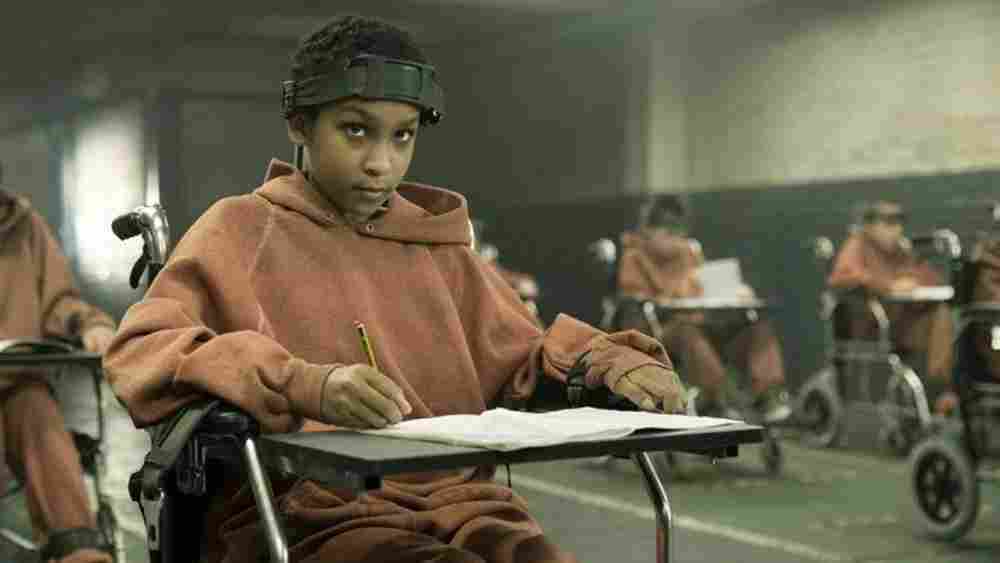
Colm McCarthy’s The Girl with All the Gifts is an adaptation of Mike Carey’s refreshing zombie apocalypse novel. Mr. Carey adapts his novel to the screen, which puts forth the nature vs. nurture debate. In this narrative, the zombie outbreak is caused by a mutated variant of a fungal infection. The zombie-like creatures are called ‘hungries’. The first half of the narrative is set in an underground detention center, which mostly houses children. Every day these children are strapped to a wheelchair and taken to their classroom by gun-toting military people.
One of the most gifted among the children is Melanie. She is a high-functioning offspring of hungries who can revert to her primal state if humans get too close to her. When the hungries breach the center, Melanie embarks on a journey of survival with her human keepers. The Girl with All the Gifts has a strong plot though it gets predictable towards the end. The lack of action and lackluster special effects might disappoint zombie horror fans.
24. ParaNorman (2012)
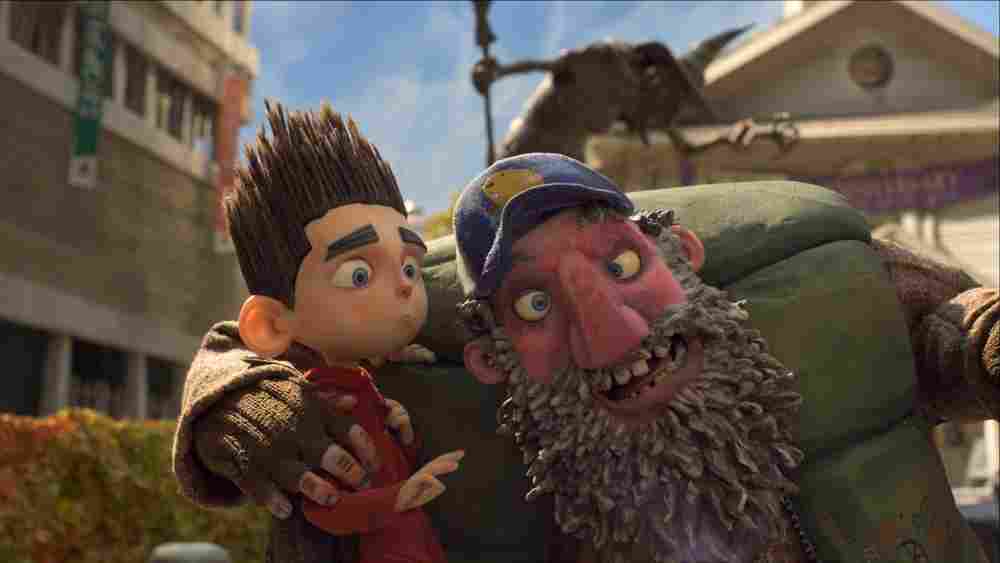
Sam Fell and Chris Butler’s stop-motion animated feature ParaNorman is a zombie flick for the family. It revolves around an outcast kid named Norman Babock, who lives in the sleepy little town of Blithe Hollow. The misfit, however, possesses a gift or a curse. Norman can see dead people. Soon, the boy discovers that his hometown is under threat due to a witch’s curse. He and his fellow outcast friends must fight the undead to save their town.
ParaNorman is an equal parts coming-of-age tale, slapstick comedy, and zombie horror. Butler, who’s worked on stop-motion projects like Corpse Bride (2005) and Coraline (2009), uses a similar quirky aesthetic background for the film. There are a few genuinely scary moments. For instance, the scene where zombies rise from the grave amidst the gnarled trees.
From a narrative standpoint, ParaNorman is influenced by John Hughes’ coming-of-age classics like The Breakfast Club (1985).
23. #Alive (2020)

Cho Il-hyeong’s #Alive instantly reminded me of Dominique Rocher’s The Night Eats the World. Like in that film, a young man wakes up one morning in his apartment to find that a zombie outbreak has taken over the world. In #Alive, Oh Joon-woo is an avid gamer, and he is trapped in his apartment without much food. After days of isolation, Joon-woo finds another survivor in the apartment block across from him. The duo concocts an ingenious plan to communicate and survive together.
While Night Eats the World opts for a contemplative tone, #Alive uses its minimalist setting to generate inventive action and ample tension. Park Shin-hye and Yoo Ah-in’s incredible performances brilliantly convey the frustration, hopelessness, and terror of being trapped in such a scenario. Writer/director Cho Il-hyeong’s protagonists smartly utilize technology to save themselves from imminent danger. Released in the same year as the disastrous sequel to Train to Busan (Peninsula), #Alive is clearly an innovative Korean zombie flick.
22. White Zombie (1932)
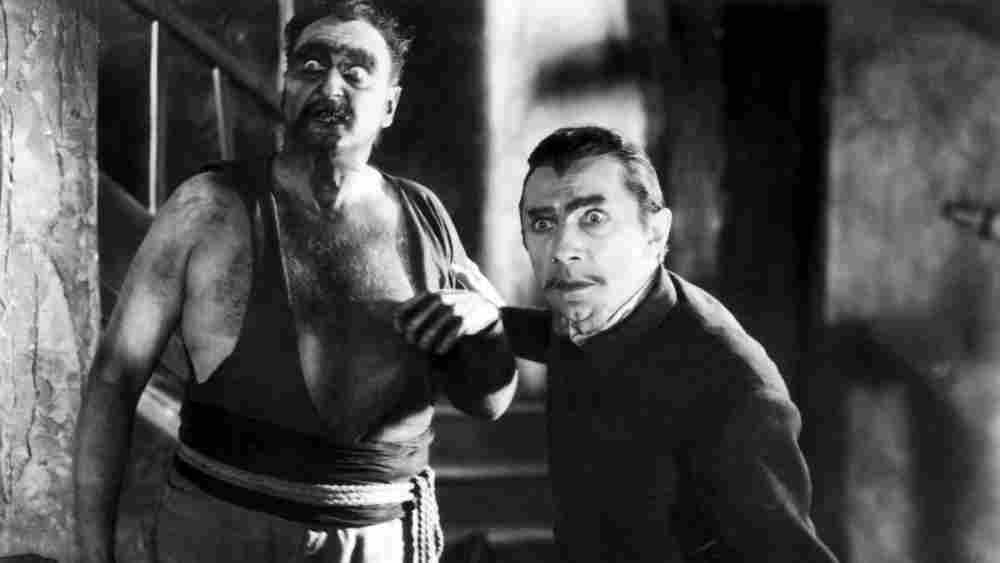
Between the 1920s and 1950s, small B-movie studios made cheap horror, Western, and noir genre films to make a quick buck. Such works were described using the slang term ‘Poverty Row’ films. Victor Halperin’s White Zombie was a poverty-row cinema that was shot on just $50,000 over 11 days. It had Bela Lugosi, who was fresh from the success of Dracula (1931). But White Zombie will occupy a prominent place in the history of cinema for probably introducing the concept of zombies into movies.
Unlike Romero’s later reinterpretation of zombies, Halperin’s movie simply exploits the Haitian legend regarding zombies, which is deeply connected to the Voodoo religion. In the film, a powerful Haitian sugar mill owner turns the dead into mindless slaves for the purpose of performing manual labor. It has lots of melodrama, and the acting isn’t great except for Bela Lugosi’s sinister screen presence. However, Halperin crafts an intense atmosphere that makes the sickly pallor of zombies even more unnerving.
21. Zombie (1979)
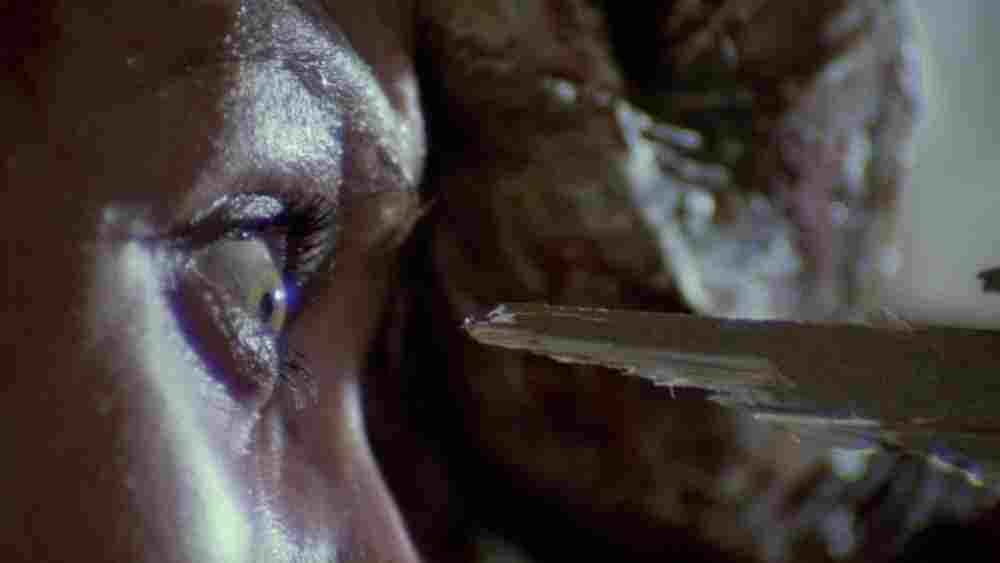
Lucio Fulci’s shocking, gory horror was originally released under the title Zombi 2 in his native Italy. It was a business decision by the studios to cash in on the success of Romero’s Dawn of the Dead, which had the title Zombi for its European release. Fulci’s Zombie opens with a sailboat floating into New York harbor. When a police officer is attacked by a flesh-eating monster in the boat, a fearless reporter investigates the origin of the boat. His inquiry takes him to a Tropical Island, where he meets Menard, an exhausted doctor who is fighting an epidemic of zombie infections.
Lucio Fulci’s movie was inspired by HG Wells’ Island of Dr. Moreau and Val Lewton’s I Walked with a Zombie. The filmmaker’s portrayal of the undead is very different from Romero’s versions. In fact, Fulci doesn’t use the flesh-eaters to provide any subtext. The pleasures of watching Zombie simply lie in its witnessing over-the-top gore effects.
20. Warm Bodies (2013)
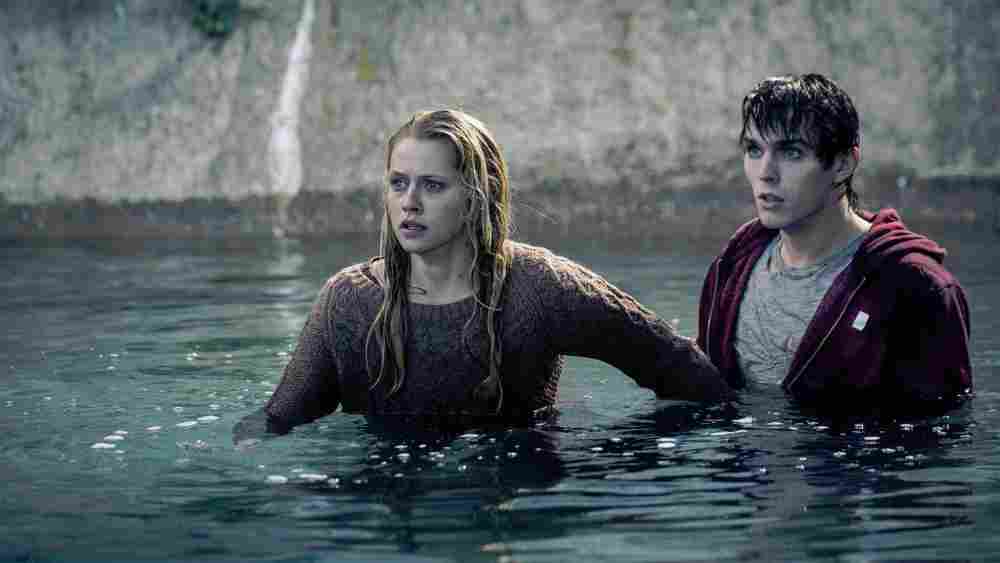
Based on a novel by Isaac Marion, Jonathan Levine’s Warm Bodies finds heart and humor in a post-apocalyptic set-up. In a world ravaged by the plague of the undead, R (Nicholas Hoult) is an anomaly — a zombie who retains some sense of humanity. R’s life changes when he meets a pretty survivor named Julie (Teresa Palmer). The strange bond is initiated when R munches on Julie’s dead boyfriend’s brains. He not only saves Julie, but also tries to get her back to her father (John Malkovich).
This zombie rom-com is an inventive mishmash of genres. The serious storyline involving human paranoia doesn’t work as much as the witty romance part. Yet Warm Bodies greatly benefits from a wonderful cast and solid performances. Director Levine interlaces pop-culture references with literary ones like Shakespeare’s Romeo and Juliet. There are also plenty of amusing observations about the human condition.
19. Cemetery Man (1994)
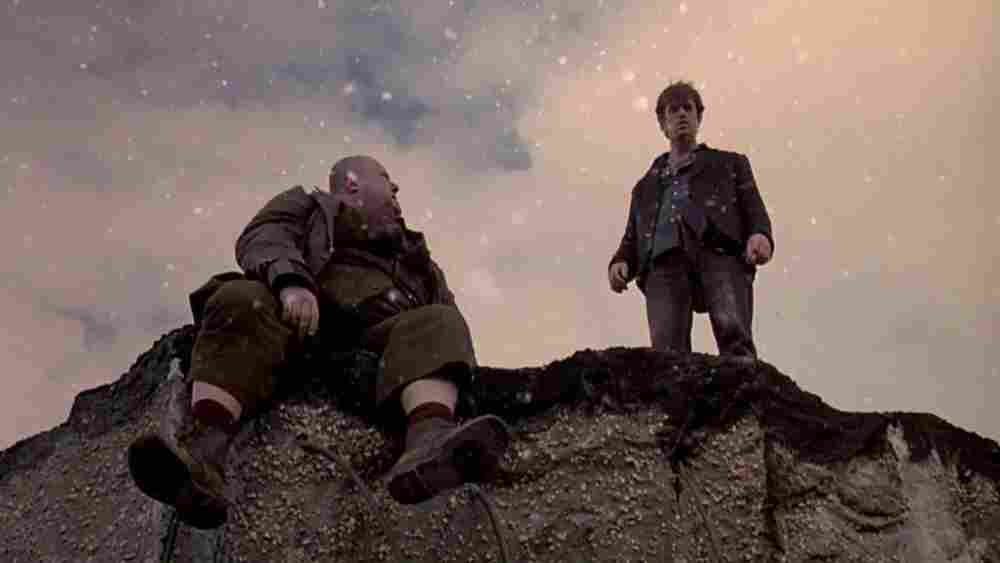
Michele Soavi’s Cemetery Man is a poetic horror comedy featuring British actor Rupert Everett as the central character, Francesco Dellamorte. He is the caretaker of a dilapidated estate that also houses a vast cemetery. Dellamorte is aided by a simpleton named Gnaghi. Apart from being caretakers, they also deal with the zombie problem. The dead often rise from the graves and need to be quickly and quietly dispatched. Things take a bizarre turn when Dellamorte falls in love with a beautiful young widow.
Michele Soavi entered the industry acting in Lucio Fulci’s movies and later worked as an assistant director to Dario Argento. Like the works of Giallo masters, Soavi also has an incredible eye for composition and an innate ability to craft atmospheric, artful scenes. The quirkiness in Cemetery Man might remind us of Evil Dead II and Braindead. Overall, it’s a witty and weird zombie flick.
18. Dawn of the Dead (2004)
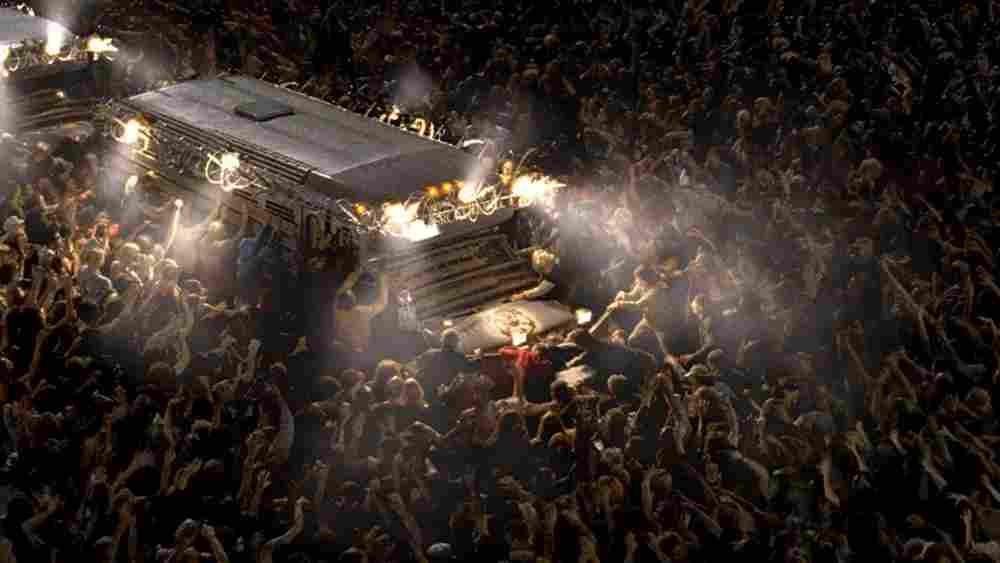
Zack Snyder’s remake of Romero’s 1978 cult classic is relatively restrained compared to the filmmaker’s recent soulless zombie flick Army of the Dead (2021). Snyder opens Dawn of the Dead in the middle of pandemonium that unfolds in a suburban neighborhood. For reasons unknown, people get infected, die, and turn into flesh-eating zombies. A small group of survivors, including nurse Ana (Sarah Polley) and cop Kenneth (Ving Rhames), barricade themselves inside a mall and wait for help.
The screenplay is by James Gunn, who has directed gory horror flicks like Slither (2006) and superhero blockbusters like Guardians of the Galaxy and The Suicide Squad. Gunn’s script is clearly the most flawed aspect of the film. It lacks the mordant wit of Romero’s original script. Snyder, however, does a pretty good job staging the explosive action sequences. There are no stand-out performances in the ensemble cast. At the same time, there’s no bad or easily forgettable performance.
17. World War Z (2013)
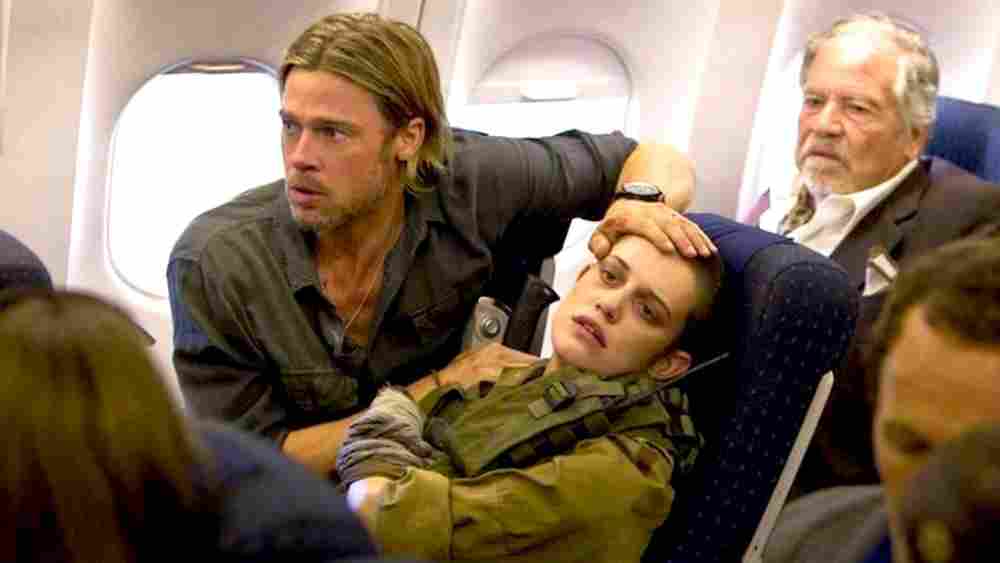
Marc Foster’s wildly entertaining, globe-trotting zombie flick is based on Max Brooks’ 2006 novel of the same name. Brad Pitt co-produced and plays the lead, Gerry Lane, a former United Nations investigator. Gerry is tasked with the mission to travel around the world in order to find the source of the infection. It is hoped that tracing the virus’ origin can help combat the infection.
Max Brooks’ novel cleverly employs zombies as a literary device to explore and criticize American foreign policy. It observes how the globalized neo-liberal economic policies cause damage to the populace, especially during a crisis like the pandemic.
However, Marc Foster’s adaptation downplays the socio-political commentary and rather focuses on the adrenaline-pumping zombie set-pieces. Foster’s spectacle-over-substance choice largely works since the action is terrifying and fairly realistic without ever being preposterous. There’s also enough emotional stake to keep us invested in this disaster movie.
16. The Serpent and the Rainbow (1988)
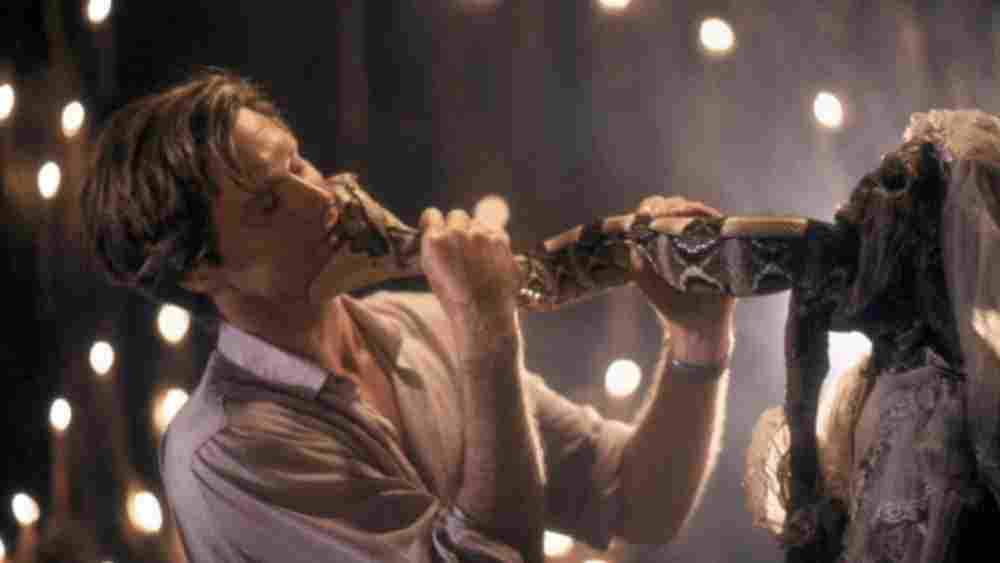
Wes Craven has made horror blockbusters like A Nightmare on Elm Street (1984) and Scream (1996). At the same time, he’s also taken up unique horror projects and pushed Hollywood studios to back such endeavors. This includes films like The Serpent and the Rainbow and People Under the Stairs (1991). The narrative revolves around Dr. Dennis Alan (Bill Pulman), who is asked by a pharmaceutical company to investigate a strange case in a Haitian village.
A man named Christophe was said to be resurrected after his death due to a voodoo ritual. The pharmaceutical giant simply wants Alan to find the ingredients of ‘zombification’ so that they can replicate and sell it in the States. Shot on location in Haiti and Dominican Republic, Serpent and the Rainbow is a fascinating exploration of voodoo dance rituals and black magic. Craven also smartly juxtaposes the voodoo horror with the real-life political turmoil in Haiti. It has a lot in common with early zombie films like White Zombie than Romero’s films.
15. The Odd Family: Zombie on Sale (2019)
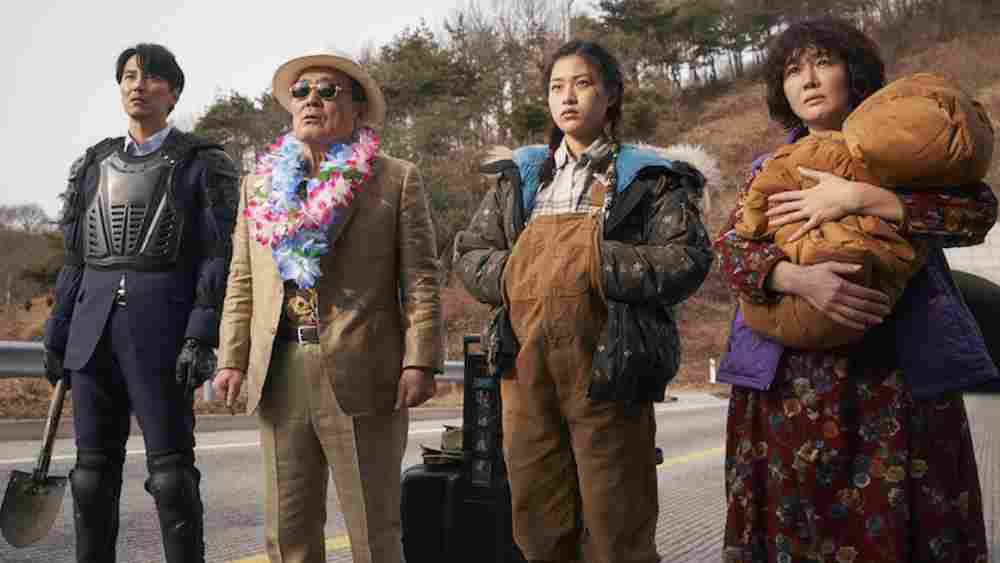
Since the 2016 instant hit Train to Busan, South Korean cinema has provided a unique perspective on the already crowded zombie movie market. Writer/director Lee Min-jae’s Zombie on Sale is a consistently charming zombie outbreak movie that leans more into comedy than horror. Set in a remote South Korean village, the narrative revolves around the Parks. The family is an eclectic bunch of oddball characters who operate a mechanic shop and a gas station. One day, they encounter a zombie that was created in a pharmaceutical company.
Surprisingly, the zombie is well-behaved and seems to prefer cabbage over human brains. Besides, the zombie comes bearing a gift, which the Parks use to make some money. Lee Min-jae cleverly subverts expectations and maintains a comedic touch throughout the film. The biggest strength of Zombie on Sale is the unconventional yet charming characterization of the Park family members. Each actor brings their own charisma to the characters.
14. Braindead (1992)
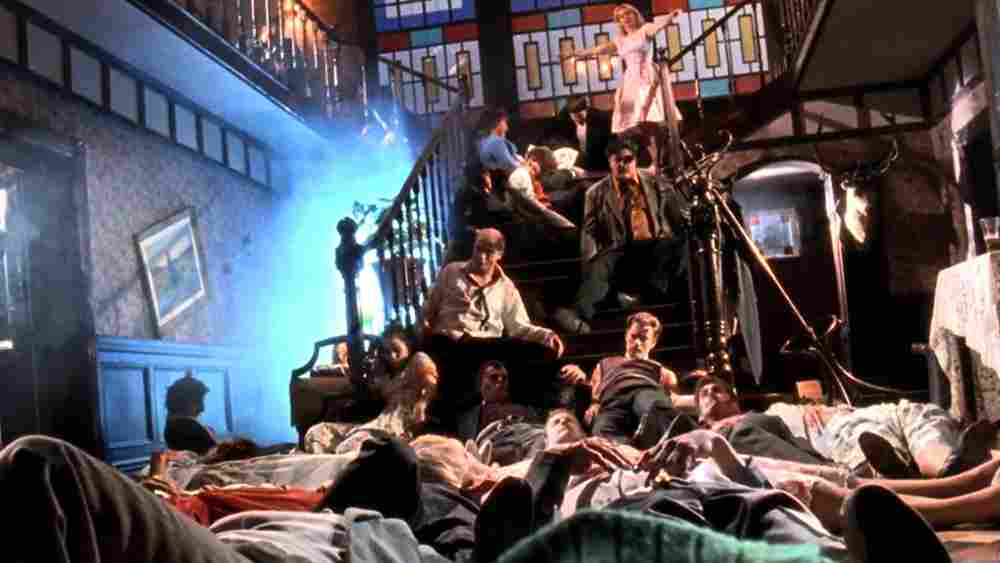
Lord of the Rings fame Peter Jackson’s Braindead is dubbed as one of the goriest films of all time. The graphic effects featuring mutilations and dismemberments are also combined with over-the-top humor. Like Return of the Living Dead or Re-Animator, Braindead is definitely not for the squeamish. The plot is fairly simple and is set in a quiet New Zealand town. It’s a wickedly amusing tale of a mother’s intense love for her son. The mother gets furious when her son Lionel falls in love with young Paquita.
While covertly observing the pair at the Zoo, the mother is bitten by a Sumatran rat monkey. What follows is a hideous transformation that includes an appetite for human flesh. Moreover, the mother spreads the infection and makes more zombie-like creatures. Eventually, Peter Jackson ends the film on a truly bizarre note. The film was heavily edited in some countries, while others entirely banned it due to excessive gore.
13. Re-Animator (1985)
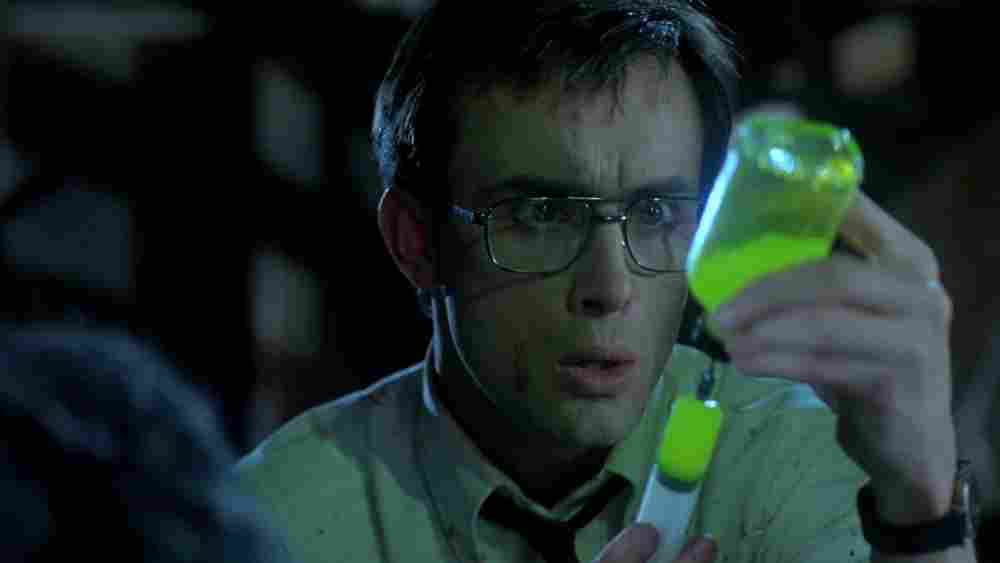
Stuart Gordon’s Re-Animator is an entertaining horror pastiche that draws its inspiration from various sources, but largely redesigns it into something fresh. Although it’s based on a story by H.P. Lovecraft, the gore imagery of Evil Dead, plays a chief role in shaping Gordon’s over-the-top aesthetics. The film is set at Miskatonic University, where medical student Dan Cain gets a new housemate named Herbert West (Jeffrey Combs). Herbert creates a serum that can awaken the deceased. He seeks Dan’s help to experiment on the corpses at the morgue. But the plan only sets off a wave of terror.
Similar to Dawn of the Dead (1978) and The Thing (1982), Re-Animator is known for pushing the boundaries of gore in horror cinema. The wacky on-screen violence is decidedly gross and maintains a tongue-in-cheek attitude. Another key reason for the film’s success was the memorable performances, particularly Bruce Abbott and Combs.
12. The Night Eats the World (2018)
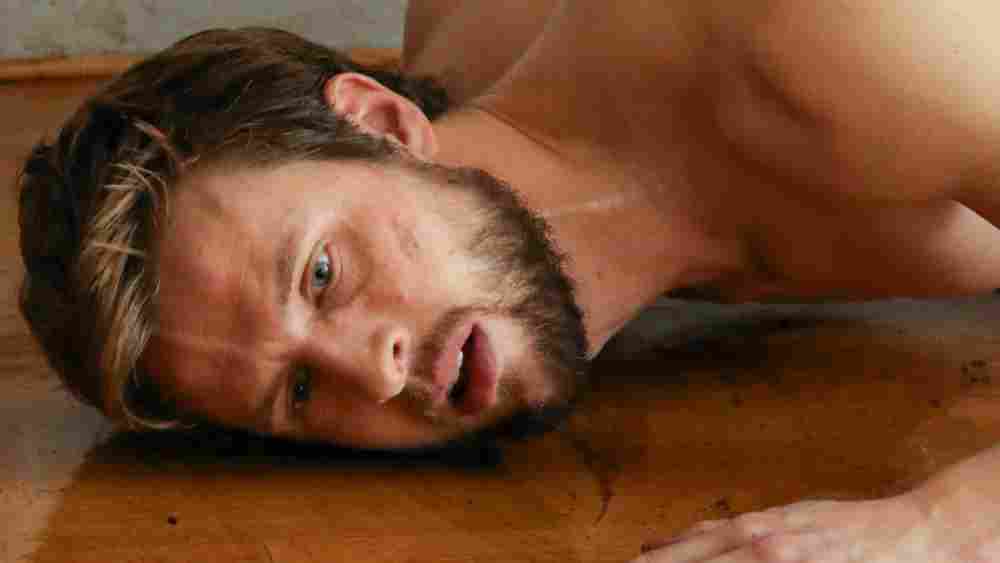
There have been many films in recent times that freshly approach zombie lore. Pontypool (2008), The Battery (2012), The Cured (2017), and The Sadness (2021) are some that reinvented tropes of this sub-genre in inventive ways. But French filmmaker Dominique Rocher offers the most fascinating connotation for a zombie movie in The Night Eats the World. Rocher utilizes the zombie apocalypse to explore the loneliness and isolation of an individual.
Anders Danielsen Lie brilliantly plays Sam, a creative and intelligent individual who does his best to survive the apocalypse and relieve his boredom. Based on the novel by Pit Agarmen, The Night Eats the World raises pertinent existential questions. The lack of action might frustrate zombie enthusiasts. Nevertheless, it is a thoughtful film that dares to deal with themes that zombie flicks usually don’t. There’s a fantastic supporting performance from Golshifteh Farahani and a poignant cameo from French actor Denis Lavant.
11. Zombieland (2009)

Ruben Fleischer uses the cheeky humor of Shaun of the Dead to craft his own goofy and gory zombie comedy. Zombieland opens right after the undead apocalypse and is narrated by Columbus, a timid and misanthropic young man who manages to survive by strictly adhering to a set of rules. While wandering through the deserted land, Columbus meets Tallahassee (Woody Harrelson), a gruff shot-gun-wielding man. The two cross paths with con artist sisters Wichita (Emma Stone) and Little Rock (Abigail Breslin). The four drifters travel together in search of something that resembles home.
Director Fleischer hails from ads and music videos background. And that reflects in his hyperkinetic stylization of the crowd-pleasing zombie mayhem. Screenwriters Paul Wernick and Rhett Reese do a wonderful job juggling different tones while also bringing enough depth to the characters. The casting is spot-on, especially Jesse Eisenberg as the geeky protagonist with weird comic timing.
10. I Walked with a Zombie (1943)
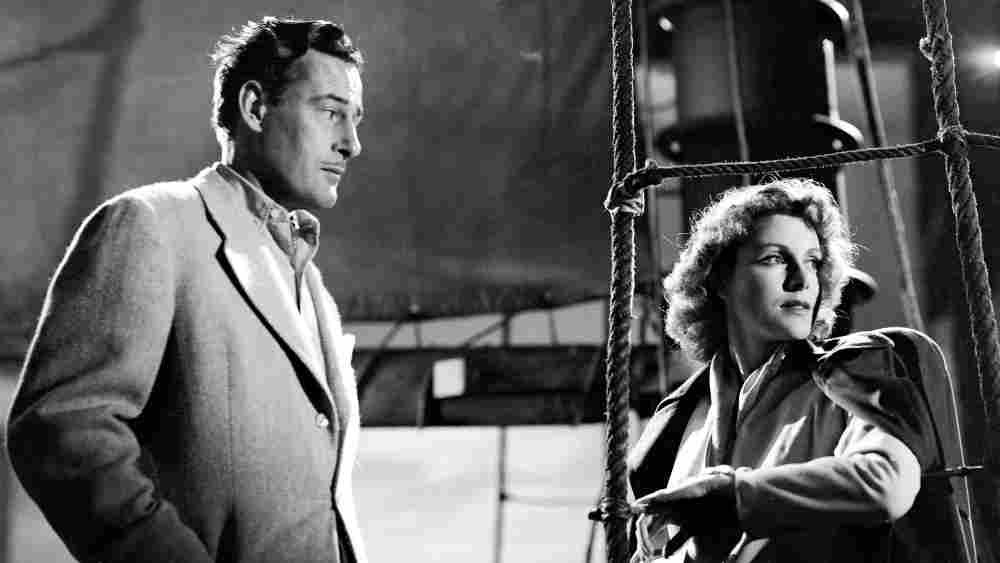
The horror films Val Lewton produced for RKO studios in the 1940s revolutionized the visual language of horror films. The first two of Val Lewton’s atmospheric horror — Cat People (1942) and I Walked with a Zombie (1943) — were directed by Jacques Tourneur, a French emigrant filmmaker who was inspired by German Expressionism. I Walked with a Zombie is set in the West Indies. Betsy, a Canadian nurse, travels to the island country to take care of Jessica, sugar plantation owner Paul’s wife. Jessica is in a somnambulistic state and the islanders believe she’s turned into a zombie.
Tourneur-Lewton’s films are known for their narrative ambiguity. We don’t get clear answers on what ails Jessica. A voodoo spell or clinical depression? Only veiled references to Jessica’s past are made. Tourneur maintains an air of mystery regarding the zombie figures. The image of dead-eyed Carrefour (Darby Jones) remains one of the most haunting images in horror cinema history.
9. 28 Days Later (2002)

Danny Boyle’s 28 Days Later opens with young Jim (Cillian Murphy) waking up from a coma in an abandoned hospital. It’s been 28 days since a group of activists broke into a laboratory and freed a bunch of chimpanzees infected with a virus called Rage. In his stroll through a deserted London, Jim stumbles upon a horde of diseased, bloodthirsty creatures. Fortunately, Jim meets two fellow survivors, Selena and Mark. However, peace in the makeshift family only lasts until they come across a group of surviving soldiers.
Danny Boyle and his screenwriter Alex Garland rehash a lot of zombie movie tropes. But unlike Romero movies, Boyle doesn’t rely much on gore to scare us. Directed with great flair and confidence, he uses the bleakness of the desolate atmosphere to immerse us in the conflicts. The cast is exceptional to boot, with Cillian Murphy and Naomie Harris turning in standout performances.
8. One Cut of the Dead (2019)
Shinichiro Ueda’s One Cut of the Dead is highly inventive, with two distinct halves. While it opens as a visually-flat zombie horror, we can’t strictly confine it to the zombie sub-genre. It opens in a run-down, abandoned warehouse as a low-budget zombie film crew acts out cheesy genre clichés. Soon, the frustrated crew and cast are attacked by real zombies. The action is ridiculous as well as darkly comic. But when the chaos in the first half runs out, the narrative gives more details about the characters.
We also get to see chaotic behind-the-scenes of the one-take zombie flick. At this point, we understand that One Cut of the Dead isn’t just a tasteless parody of zombie movies. It’s rather a joyous celebration of the creative process and pays great tribute to seminal low-budget filmmakers like George Romero. Even non-horror enthusiasts can appreciate the film if they can patiently sit through the first 40 minutes of the zombie trouble.
7. REC (2007)
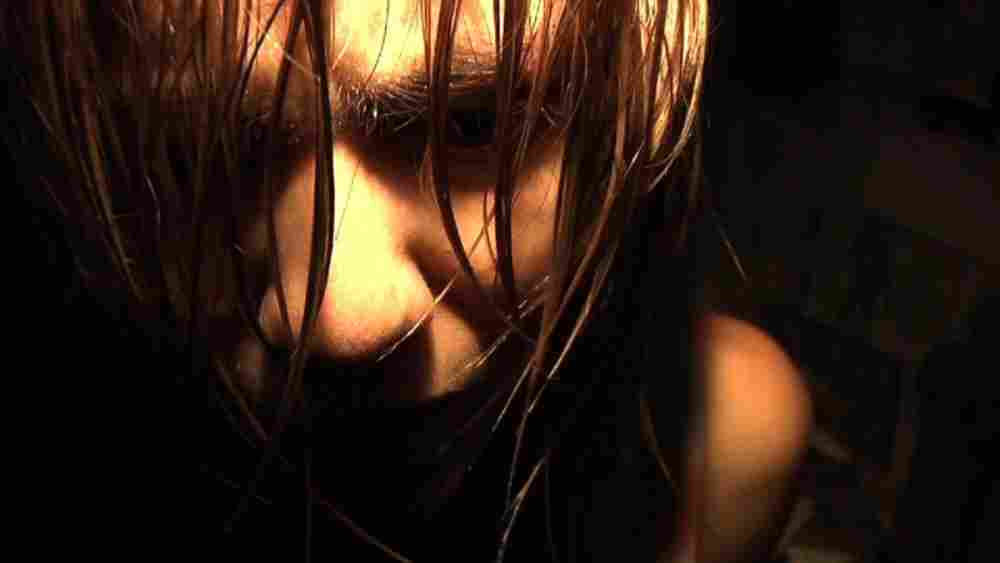
Spanish filmmakers Jaume Belaguero & Paco Plaza’s REC is a chilling entry in the overwrought sub-genre of found footage horror. It opens with a popular TV personality Angela Vidal (Manuela Velasco), tagging along with a group of firemen. The documentary program is supposed to capture the mundane everyday life of firefighters. But when the firefighters are sent to look at a disturbance in a Barcelona apartment, Angela discovers something genuinely shocking. Unfortunately, the faceless government officials seal the building, trapping Angela and her crew.
Belaguero and Plaza execute the familiar concept inventively, firmly putting us into the shoes of characters seething with panic. The editing and cinematography are also mesmerizing as any ridiculous gimmicks don’t overturn the realistic staging. REC keeps its horror and action within the boundaries of plausibility. John Erick Dowdle made the American remake Quarantine in 2008. REC was followed with three moderately entertaining sequels, though neither the remake nor the sequel matched the excellence of the original.
6. The Return of the Living Dead (1985)

Dan O’Bannon’s Return of the Living Dead is a gory, wickedly funny zombie comedy. The filmmaker is best known for his script work in Alien (1979) and Total Recall (1990). Set in the summer of 1985 in Louisville, Kentucky, the narrative revolves around the bizarre story of a chemical spill. The zombie mayhem is caused by the employees of a medical supply warehouse named Frank and Freddy. They mistakenly release the canisters of chemical gas resurrecting corpses from a nearby cemetery. Meanwhile, Freddy’s girlfriend and his punk rock friends have a party at the cemetery. Naturally, the flesh-eating ghouls crawl out and crave human brains.
Return of the Living Dead is not a splatterfest like Peter Jackson’s Braindead. Instead, O’Bannon carefully builds up the claustrophobic atmosphere and consistently amps up the sense of dread. But what differentiates this from Romero’s Dead Trilogy is the incredible comic timing and the fantastic deadpan dialogue delivery.
5. Shaun of the Dead (2004)

Edgar Wright’s Shaun of the Dead is an inventive fusion of zombie horror, visual flair, and situational comedy. Written by Simon Pegg and Wright, the film smartly pays homage to old-school zombie movies while parodying some of its tropes. The story revolves around the bland salesman Shaun, who shares the flat with his best friend, Ed (Nick Frost). He is trying to win back the affection of his frustrated girlfriend, and he has struggled to come to terms with his mother’s remarriage for a long time. But Shaun’s ordinary worries are displaced when something extraordinary impacts him and his circle of hapless Brits.
Shaun of the Dead is a fun movie that may even appeal to those who usually don’t watch zombie horror. It’s mainly because of the riotous comedic sequences and a simple yet adventure-filled premise. There are a few ugly violent sequences, though the film doesn’t blatantly rely on gore.
4. Day of the Dead (1985)
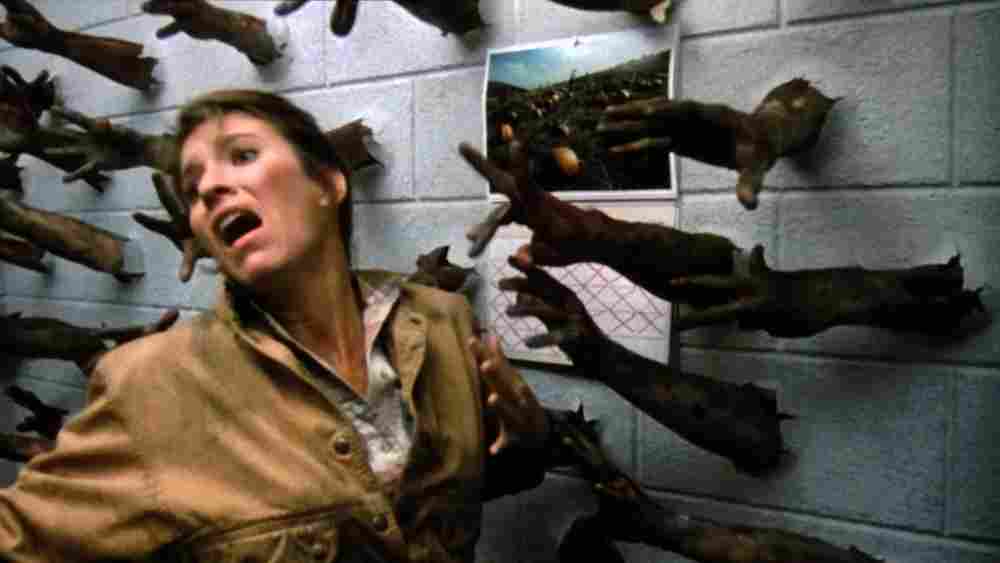
Day of the Dead is the last good entry in Romero’s ‘Dead’ series before it turned silly and childish. The undead apocalypse is complete in this simple and straightforward sequel to Dawn of the Dead (1978). Zombies run the show and humans are forced to live in underground shelters. Such dwellings are ruled by military types who scoff at the scientists’ interest in experimenting on zombies. Still, a group of scientists hopes to understand the zombie hordes and tries to find a cure. Tom Savini’s gore or special effects are the unique elements of Day of the Dead.
Romero amplifies the body horror stuff here, as we witness many imaginative moments of zombies feasting on vulnerable humans. Moreover, in Day of the Dead, Romero directs his focus on humans. He depicts how humans divide themselves into factions when civilization’s veneer collapses and stimulate internecine conflicts.
3. Train to Busan (2016)
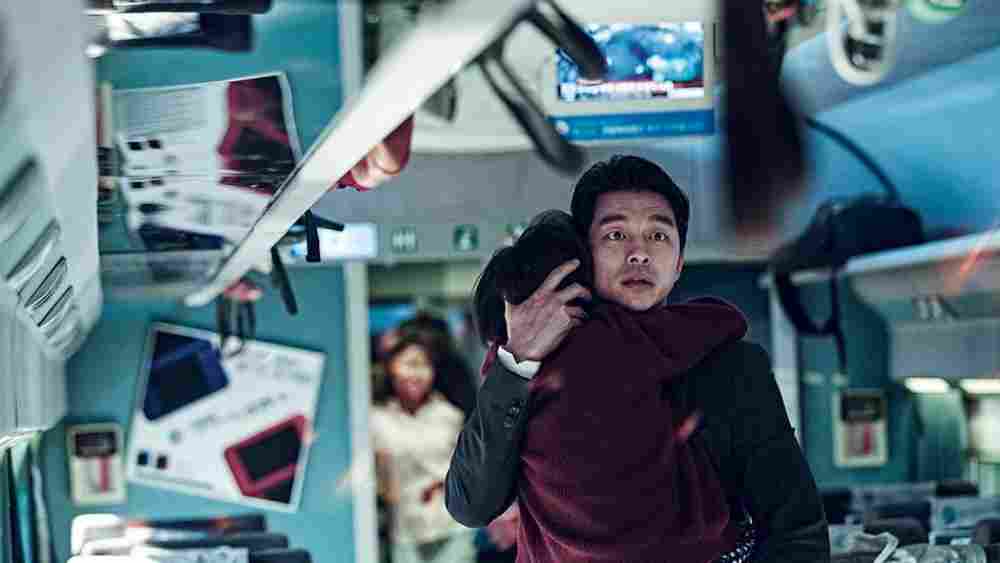
Just when we thought zombie movies had lost their sheen, Yeon Sang-ho’s Train to Busan boosted the sub-genre. Like the mass zombie mayhem in Romero’s Dawn of the Dead, Train to Busan chooses to set its high-octane action in a familiar everyday space: high-speed rail. Besides, unlike Romero’s zombies, Korean zombies are faster and more acrobatic. The film revolves around an apathetic businessman, dad Seok-woo who takes his little daughter Su-an back to her mother. But a dangerous epidemic breaks out just as the father and daughter board the high-speed train.
Director Yeon Sang-ho does a fabulous job of crafting chilling zombie chase sequences by smartly using the tight confines of a train. There’s also a relevant socio-political commentary on greed and economic disparity. Train to Busan inspired a wave of Zombie films and series, including the recent Netflix releases like Kingdom, Happiness, and All of Us Are Dead.
2. Dawn of the Dead (1978)
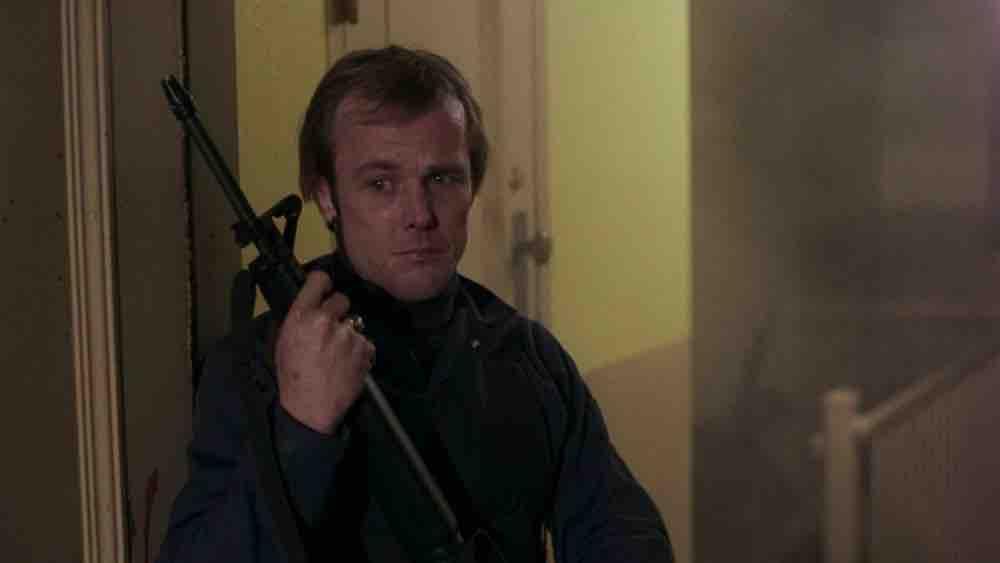
Romero’s Dawn of the Dead is not a perfect sequel to Night of the Living Dead. It was more of an expansion of the ideas and themes Romero developed in the black-and-white claustrophobic horror. The filmmaker’s socio-political commentary and satirical digs at every institution, from the military to the media, are pretty well balanced with the tense set-pieces. A large portion of Dawn of the Dead is set inside a mall. As the characters try to explore this capitalist paradise and evade the peril of zombies, Romero fiercely indicts greed, mindless consumerism, and the shallow comforts of society.
The film also features spine-chilling sequences, like the opening zombie carnage at a TV station. The characters are more fleshed-out, and the performances multi-layered. Three different versions of Dawn of the Dead are available. While Romero prefers the theatrical version (127 minutes), there’s also the extended Director’s Cut (170 mins). The one version that needs to be avoided was Dario Argento’s cut (119 mins), which was released in European countries.
1. Night of the Living Dead (1968)
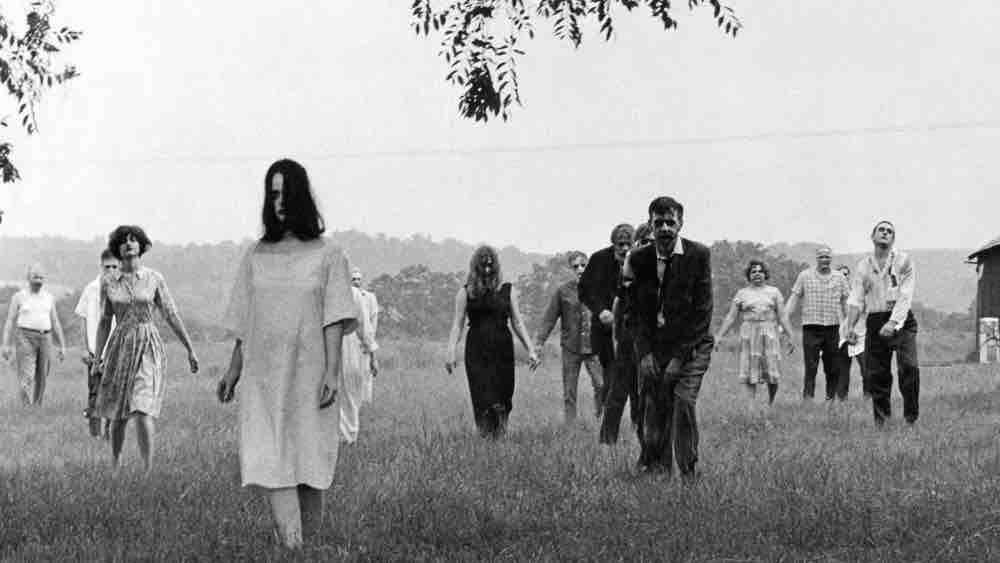
In 1968, a Pittsburgh native named George A. Romero shot a film on a shoestring budget and became the inventor of the modern zombie horror subgenre. The narrative is set in Pennsylvania as a ragtag bunch of people barricades themselves in a farmhouse in order to keep themselves from the flesh-munching zombies. Romero established most of the tropes of zombie horror, including infection through a bite and shooting zombies in the head to incapacitate them. Shot on cheap black-and-white film stock and adorned with realistic gore, Night of the Living Dead is an excellent work of horror.
Besides, Romero’s claustrophobic horror and anxieties over the zombie apocalypse held potent social commentary. The late-1960s was the era of the Vietnam War and the Civil Rights movement, which polarised America. Romero’s horde of living dead taps into the fears and uncertainties of the decade. Romero made elaborate and showier sequels to this one. But Night of the Living Dead remains a fine synergy of horror cinema aesthetic and social commentary.
Conclusion
There we are! These are some of the most bloody, gory, hilarious, and darkly fascinating zombie movies. The walking dead genre doesn’t seem to have much life left. Nevertheless, in the last decade, there have been quite a few refreshing takes on the sub-genre. There are more worthy zombie flicks outside the ones mentioned above. If you’re looking for more of these mindless flesh-eaters, check out The Beyond (1981), Night of the Comet (1984), Night of the Living Dead (1990), Resident Evil (2002), 28 Weeks Later (2007), The Battery (2012), The Returned (2013), and Cargo (2017).
Also, check out The Signal (2007), Pontypool (2008), Mayhem (2017), and The Sadness (2021). They aren’t technically zombie films but revolve around an infection that turns humans violent.

